THE DISCOVERY OF
A NINTH-SIZE PLATE BOX OF
DAGUERREOTYPES

FROM THE DAWN OF
VISUALLY RECORDED HISTORY
[* UPDATED *]
THIS PLATE BOX MAY CONTAIN
THE LOST DAGUERREIAN WORK OF
DOCTOR JOHN WILLIAM DRAPER AND
PROFESSOR SAMUEL F. B. MORSE
AT THE UNIVERSITY OF THE CITY OF NEW YORK
[ from September, 1839 to April, 1840 ]
The essay that follows was researched and written over twenty years ago. In a series of speculative investigations, it theorized that the plate box contained a visual record of the experimental work of Draper and Morse on some of the earliest daguerreian portraits of the human face.
At the time this essay was written, there was no definitive proof -- only a weight of circumstantial evidence. The theory had ultimately rested only upon subjective opinion. Objective evidence was lacking.
Even stripped of all speculation however, the essay contained some useful information concerning the earliest history of daguerreian photography.
The essay was left on the Internet in the hope that sharing the images and research would someday draw definitive proof or disproof.
The plate box itself, was set aside to await future advances in technology or further discovery through research or through insight.
Recently, careful re-examination of the information contained in the images revealed important visual detail overlooked twenty years ago.
The recognition of this detail more closely approaches the standard of OBJECTIVE evidence.

This introductory page to the essay will present a brief summary of the new evidence, but for the present, the essay that follows will remain as originally written.
The additional information (shown below) could help to substantiate most of the speculation in the original essay.
VISUAL EVIDENCE RECENTLY
DISCOVERED IN THE PLATE BOX:
Shown below are several engravings of the Unitarian Congregational Church of the Messiah. In May 1839, this church was completed on the corner of Waverley Place and Broadway (behind the University of the City of New York).

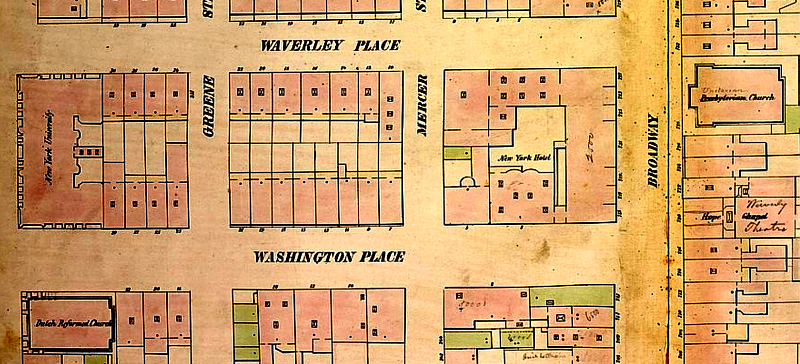
The plat map detail shown above is from 1854. The University building is on the left (west) side of the map and the Unitarian Church (mislabeled and corrected) is on the right (east) side. In 1839, much of the area between the two buildings was vacant land. For instance, the New York Hotel was not built until the early 1850s.
Draper and Morse each took their first successful daguerreotypes from different rear (east) windows of the University building. At the time, both men were likely experimenting alone and unknown to one another. Each captured a view of the church, but both of these "first" daguerreotypes are now lost.
Shown below is a quarter plate daguerreotype which still exists in the Draper Collection of the Smithsonian Institution. It records a later (circa 1848-1850?) view of the area behind the University, and was presumeably also taken by Draper from the back of the University building.
The original reversed image is shown on the left and laterally corrected on the right, followed by some enlarged detail.

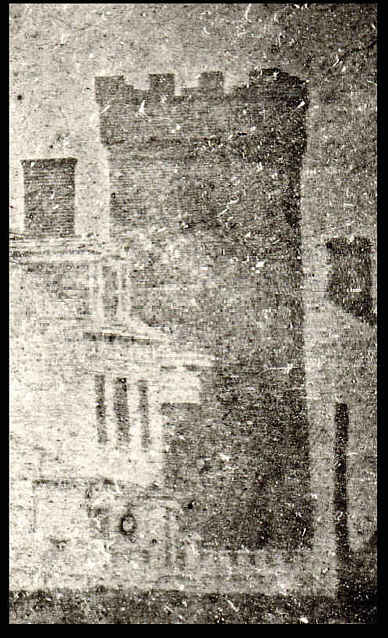
This is the Church of the Messiah.
Slight variation in the castellation, etc., from the engravings can probably be ascribed to artistic license by the engravers.
In addition to the church, this daguerreotype appears to show built-out upper stories behind row houses that lined the south side of Waverley Place by 1850.
The castellated top of the tower rises just above a dark, circular window on the west side of the church.
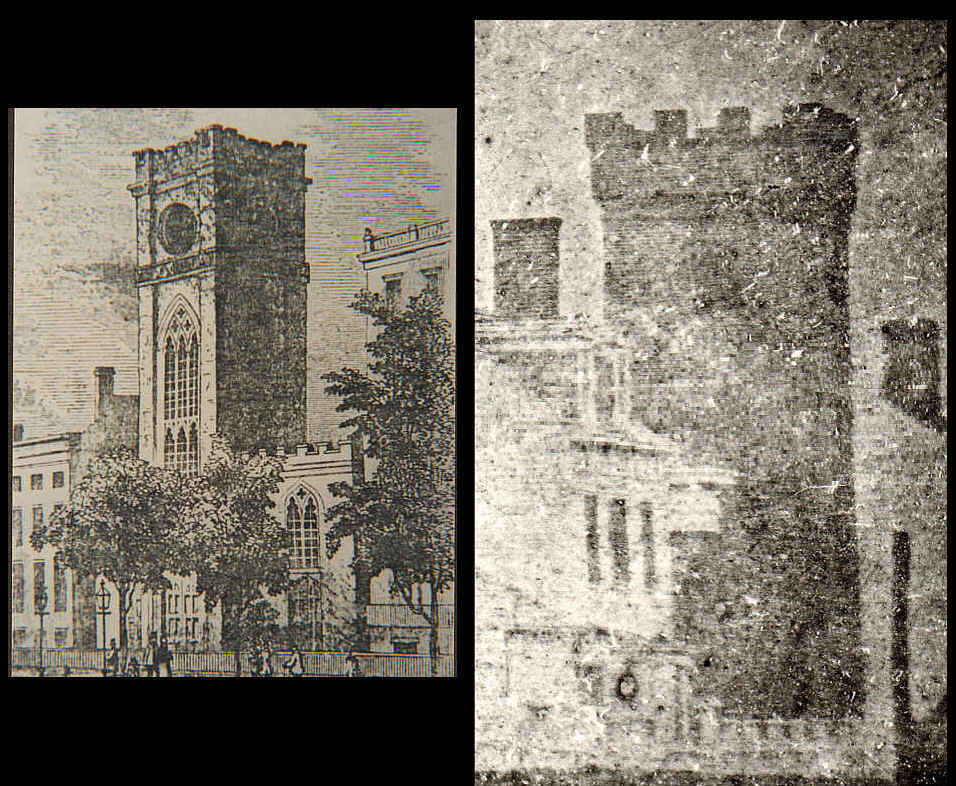
Below is a ninth plate daguerreotype from the plate box arbitrarily designated plate "H". The original reversed image is on the left and the laterally corrected image is on the right.

A detail of the background in the center of this daguerreotype reveals a castellated tower rising just above circular dark objects.
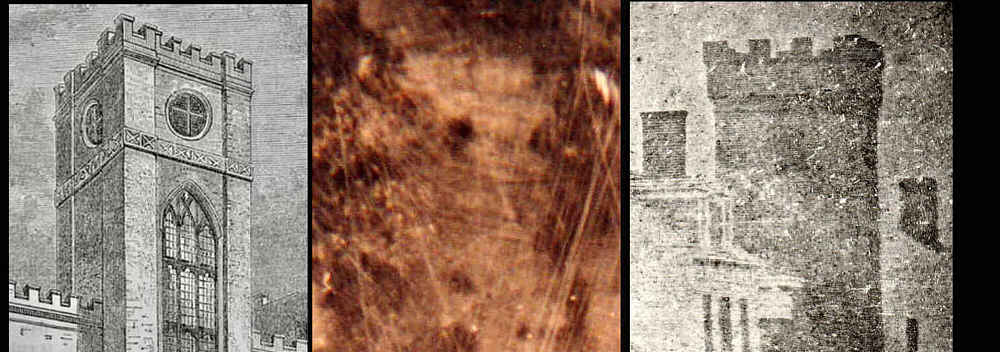
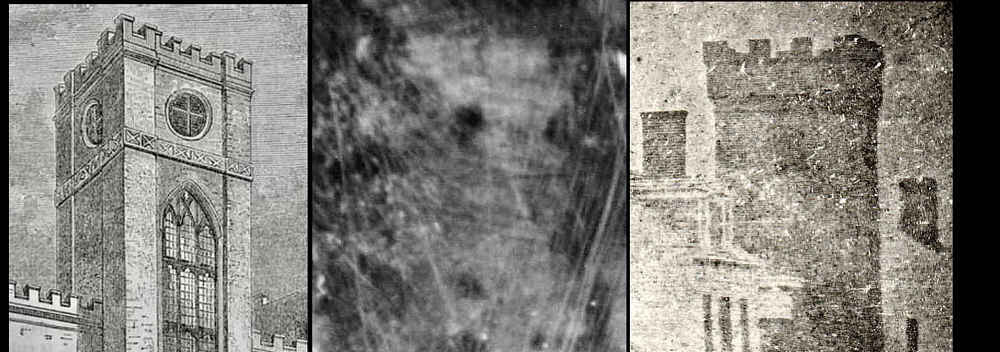
The presence of such a visually distinctive landmark as the Unitarian Church of the Messiah would add important objective evidence of location to the plate box images.
If the castellated tower
centered in plate "H" is an approximately equidistant view of the Unitarian church from a position shifted somewhat to the north, then the two dark circles in the castellated tower visible in plate "H" could be windows on both the north and west side of the church tower.
If the Church of the Messiah is the building centered in plate "H", then the posed subject would be sitting in what might be a garden or a greenhouse, located a little in front (west) of the west side of the northwest corner of the University building. The center of plate "H" would thus capture a selective view eastward along Waverley Place toward Broadway (see the plat map detail shown above).
Plate "H" was not a snapshot.
The camera was carefully positioned between hanging-plants and building-edge in order to center the castellated tower in the daguerreotype.
As previously noted, the Unitarian Church of the Messiah was the subject of the first successful daguerreotype taken by Samuel Morse.
On 28 September 1839, that daguerreotype was publicly exhibited and gained Morse some notoriety in New York City. Thus the church was already an important landmark for the professor, possibly leading him to center it in plate "H" a few days later.
Shown below is a later (circa 1880?) photograph of the University building, taken from the front (west side). The full photograph is shown on the left with enlarged detail of the northwest corner on the right.
Some forty years earlier, plate "H" would have been taken in front of the northwest edge of this building.
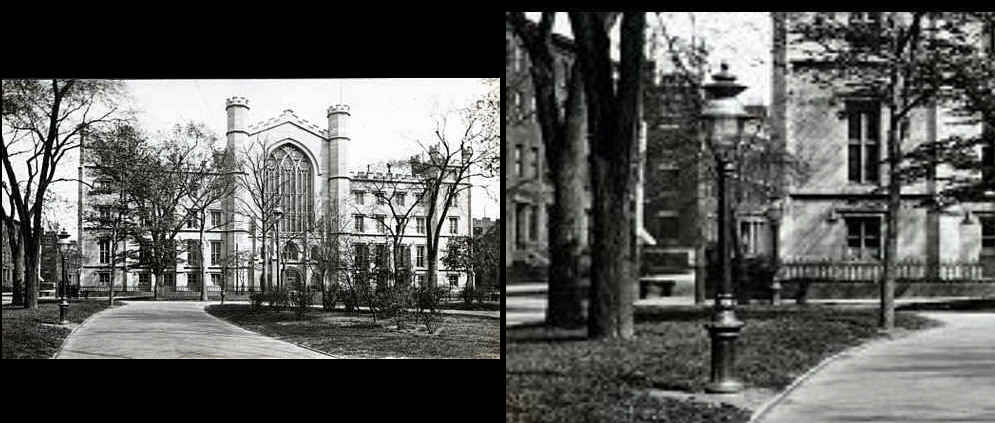
Below on the right, an extreme close-up detail of the same photograph magnifies the distinctive northwest corner of the University building.
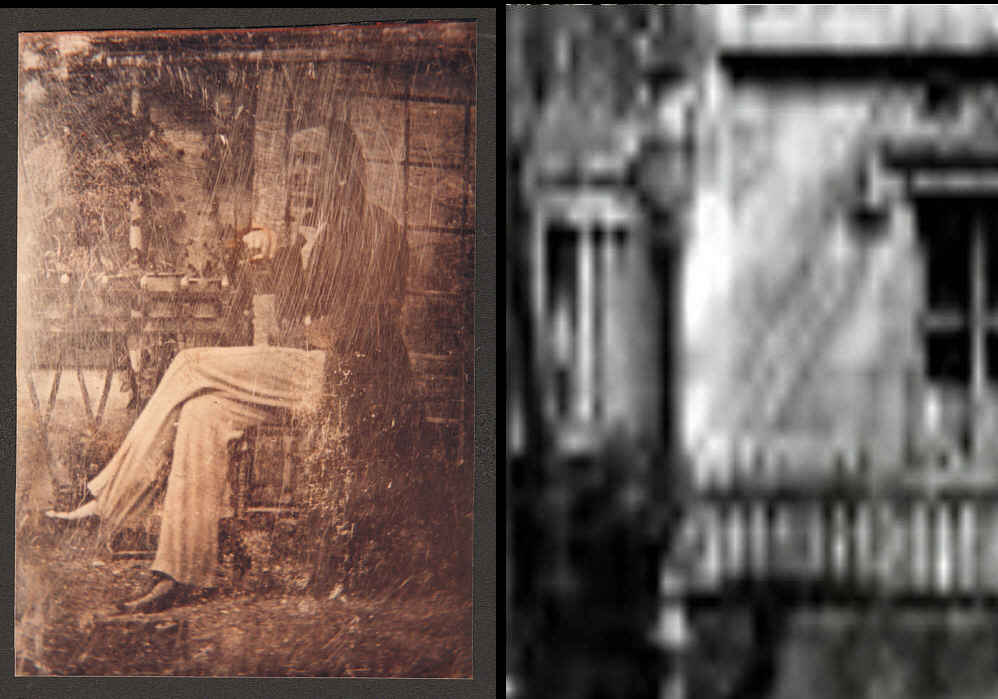
The man in the plate "H" daguerreotype is certainly posed with artistic composition.
He sits in the foreground with flower-potted plants arranged on a stand.
Some distance behind him, the building-edge creates a middle ground
on the right side of the daguerreotype.
The castellated tower centered in the distant background achieves complete perspective.
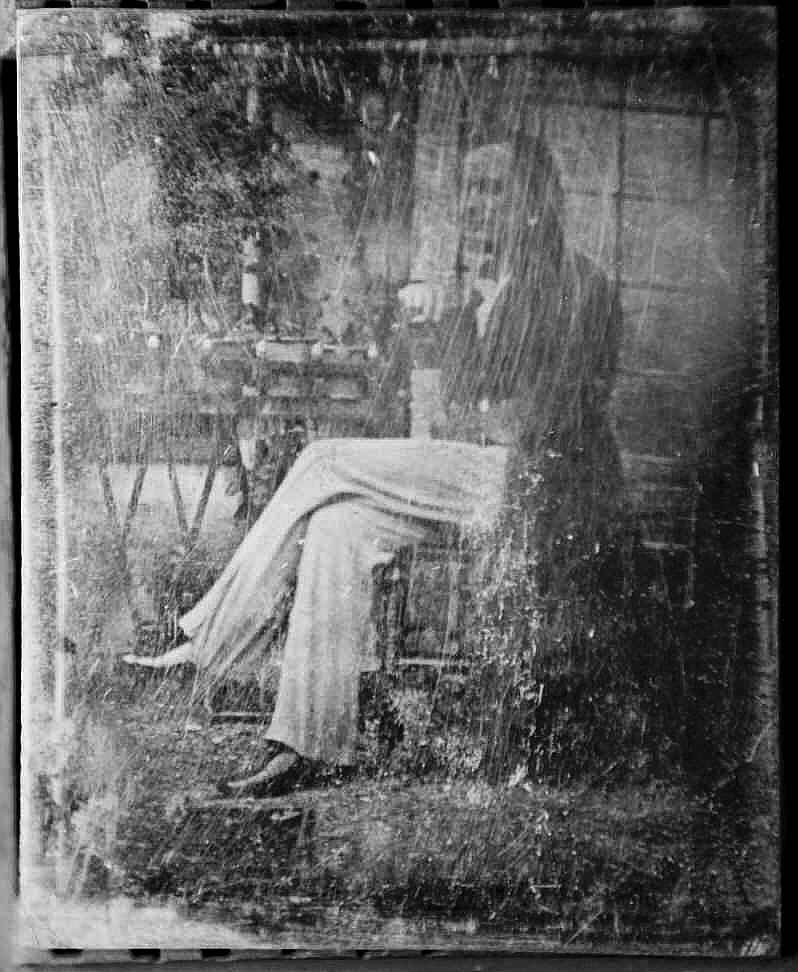
Objective evidence of location is what is required to support the weighty subjective evidence within the following essay.
LINK TO ORIGINAL ESSAY
For a few additional views of the castellated tower visible in plate "H" follow this link:
Tower
For some further considerations concerning the tower in plate "H" follow this link:
Tower 2
For some unrelated but supportive evidence of the location of the plate box images, follow this link:
Plate "I"
Further information about the daguerreotype of the Unitarian Church of the Messiah in the Draper Collection of the Smithsonian Institution can be found in:
Howard R. McManus, "Daguerreian Treasures at the Smithsonian Institution," The Daguerreian Annual 1996, 252-60.
Link to Article












